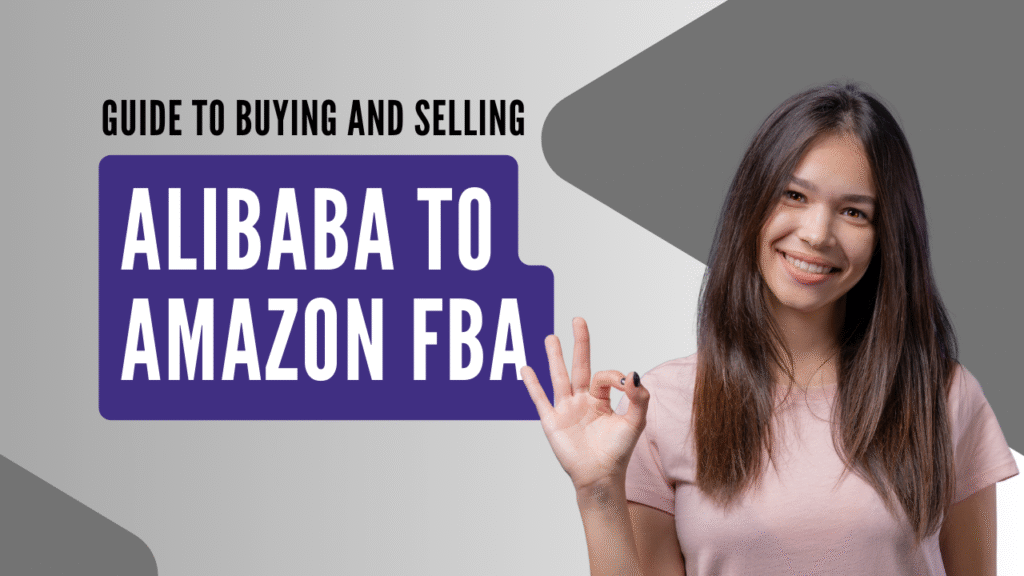
Introduction
Global supply chains and streamlined fulfillment models have transformed the e-commerce landscape. Entrepreneurs can create powerful business models by obtaining products from Alibaba and distributing them through Amazon FBA. This approach allows entrepreneurs to establish highly scalable businesses that maintain low operating costs and deliver profitable results. This guide will provide all the necessary information you need to succeed, whether you are starting as a seller or you are an experienced eCommerce professional looking for new opportunities.
The business model allows sellers to utilize Chinese manufacturing strength combined with Amazon’s logistics network. A well-planned approach allows you to establish and expand your brand by keeping risks minimal. Our upcoming sections will present every stage of the process through expert advice and real examples, together with strategic guidance.
How Does Amazon FBA Function and What Does It Entail?
The Amazon FBA (Fulfillment by Amazon) service enables sellers to have Amazon handle their product storage and shipping processes. After delivering your inventory to Amazon fulfillment centers they manage all operational tasks including order fulfillment customer service and handling returns. Amazon requires sellers to pay fees for both storage and fulfillment services.
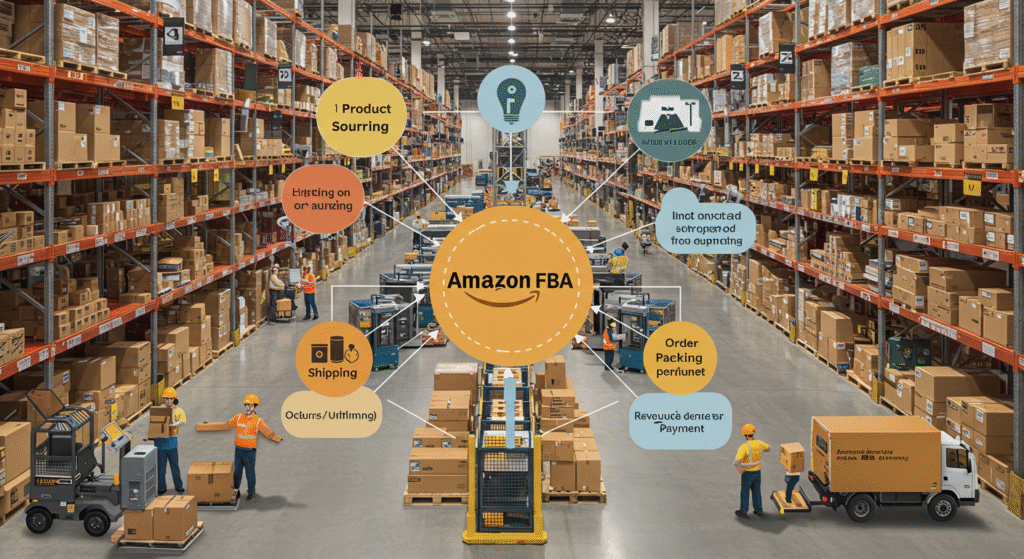
More than half of Amazon sellers choose FBA because it substantially decreases operational demands while increasing customer satisfaction through quick Amazon Prime deliveries. Sellers can dedicate more resources to marketing and business expansion because they don’t need to manage logistics.
FBA also boosts visibility. The Buy Box tends to select products that Amazon handles for fulfillment because this selection process is essential for sales growth. Through this model, small enterprises gain access to the sophisticated infrastructure systems of major global retail leaders.
How Does Alibaba Work and Why Is It a Preferred Platform for Product Sourcing?
The global B2B marketplace Alibaba connects businesses to manufacturers and wholesale companies, mostly located in China. With access to millions of products at direct factory prices, Alibaba serves as a primary resource for Amazon sellers.
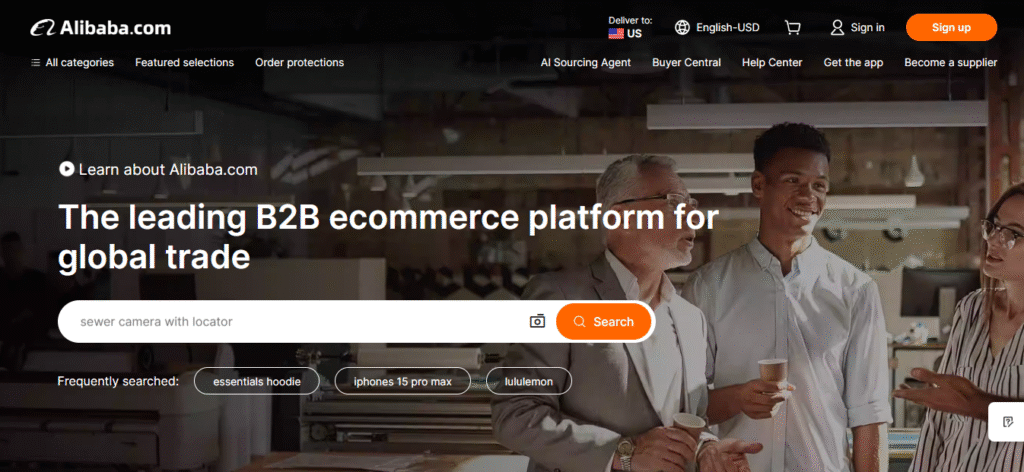
Alibaba serves bulk order needs, unlike AliExpress, which focuses on smaller purchase quantities. Establishing a serious eCommerce business requires attention to this aspect. Businesses utilize Alibaba to access private label options as well as customization services while achieving improved pricing agreements.
Alibaba excels as a platform for Amazon sellers due to its extensive product catalog and factory-direct pricing structure:
- Massive catalog of products across every category
- Factory-direct pricing, allowing for higher profit margins
- Customization options for building private label brands
- Buyers receive protection through Alibaba’s verification and trade assurance tools.
Successful navigation of Alibaba requires a thorough evaluation of suppliers through their reviews and transaction history while verifying their certifications to prevent scams and maintain product standards.
Step-by-Step Guide for Buying on Alibaba and Selling Products on Amazon
In this section, you will learn how to move from a product concept to a published Amazon listing through Alibaba suppliers.
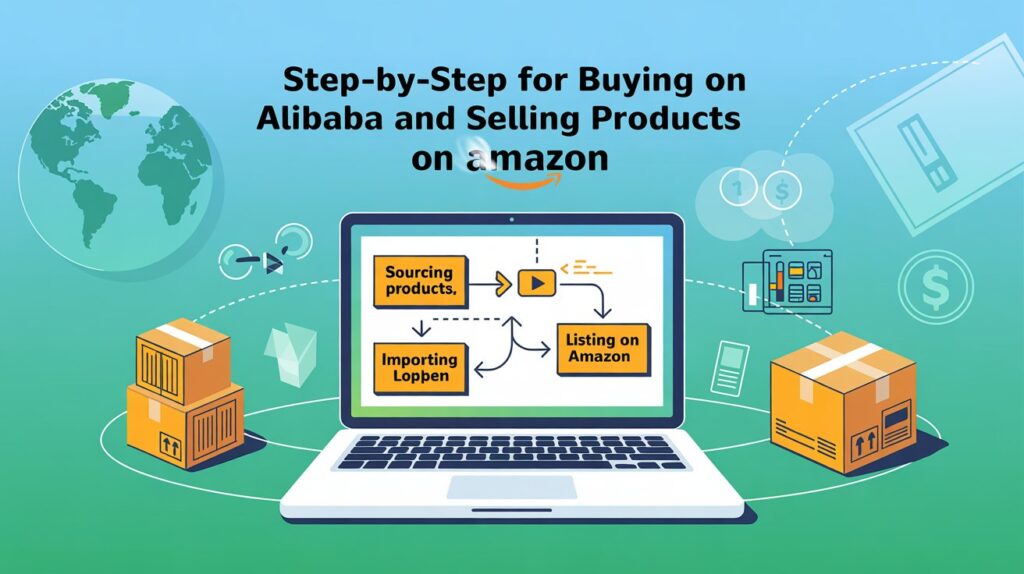
Step 1 – Research Profitable Products to Sell
The success of your business depends on thorough product research. Employ Amazon analytics tools like Jungle Scout, Helium 10, and AMZScout to pinpoint products with high demand and minimal competitive presence. Select products with a Best Seller Rank under 10,000 within market categories that maintain consistent demand.
When choosing products to sell, factor in shipping costs, which favor lighter items, as well as seasonal demand patterns and opportunities for product enhancement. Do not enter competitive categories unless your business can provide exclusive benefits to customers.
Step 2: You must search Alibaba to identify a trustworthy supplier for your product.
Begin your Alibaba search by entering product details using keywords or images once you’ve chosen your product. Select “Verified” or “Gold” suppliers that offer trade assurance when searching on Alibaba. Depending on your product niche, you should review factory audits and customer reviews while requesting product certifications such as CE, RoHS, and FDA.
Initiate dialogues to evaluate both the responsiveness and professionalism of your potential suppliers. A reliable supplier for Amazon FBA needs to demonstrate proactive service while maintaining transparency and adequate experience.
Step 3 – Request Samples and Verify Quality
Order samples first before making any bulk purchase commitments. Ensure products meet Amazon standards by checking for defects and durability. Following this procedure prevents customer complaints and expensive return processes.
Inspect the following:
- Product dimensions and specifications
- Packaging quality and branding potential
- Durability and functionality
Compare multiple samples if possible. You may find that products with higher prices deliver more value than those with lower prices.
Step 4 – Negotiate Price and MOQ
Most suppliers establish a Minimum Order Quantity (MOQ) requirement for their products. The minimum order quantity (MOQ) can be subject to negotiation with suppliers, but bulk purchasing generally reduces the price per unit. Request a detailed cost breakdown that covers packaging expenses as well as labeling and shipping fees.
Use this script as a guideline: I am launching a brand and need to start placing consistent orders. Will you be able to reduce the price if I order more units in my next purchase?
Step 5 – Place Your First Order
Once satisfied, proceed with payment. Always choose secure payment methods such as PayPal or Alibaba Trade Assurance when making purchases. Document all details such as product specifications, delivery schedules, refund procedures, and shipping conditions. Clarity is essential to avoid misunderstandings.
Steps to ship products from Alibaba to Amazon FBA.
The shipping phase stands as one of the most essential parts of the process. Your selection of shipping method between air freight, sea freight, or express shipping depends on the amount of money you can spend and how quickly you need your shipment delivered. The majority of suppliers understand Amazon FBA shipping rules and can deliver products straight to Amazon warehouses.
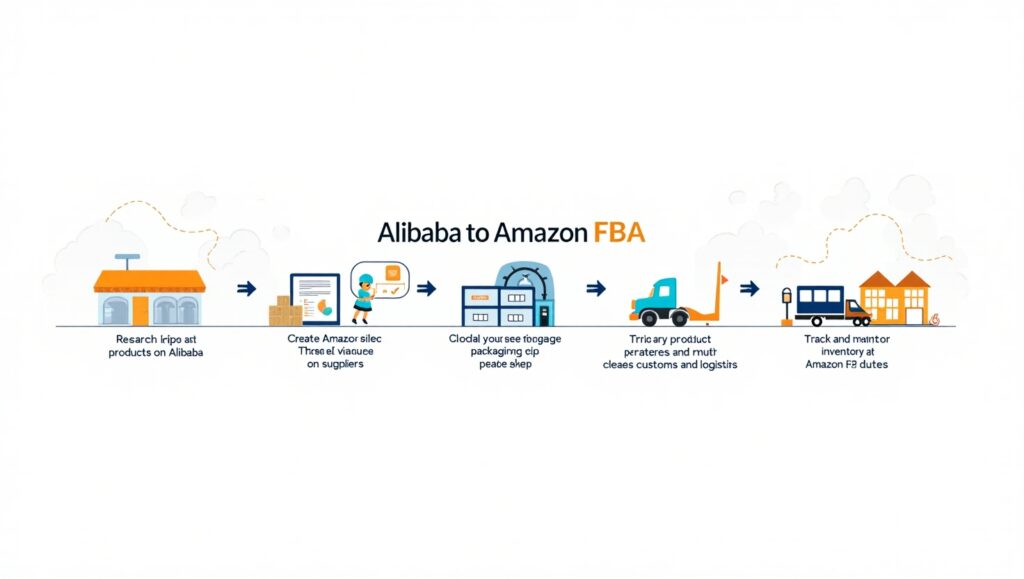
The first step in establishing this shipping process requires setting up a shipping plan within your Amazon Seller Central account. The system generates shipping labels together with destination details for you. Provide your supplier or freight forwarder with these shipping details. Amazon demands specialized labeling (FNSKU and carton labels) as well as specific packaging standards. Inventory rejection from Amazon can occur if you ignore their shipping guidelines.
Suppliers are allowed to ship directly from Alibaba to Amazon FBA when they meet Amazon’s shipping standards. Many sellers rely on freight forwarders for an efficient approach to customs clearance and delivery services, including warehousing for Amazon.
Case Study:
The new seller Anna placed her first order for eco-friendly water bottles with a supplier she found through Alibaba. She shipped 1,000 units directly to Amazon’s fulfillment center in California using sea freight. Her supplier handled all Amazon-required labeling. Anna sold each unit for $12.99 while her total landed cost per unit was $3.50, which generated over $5,000 in net profit during the first month.
Discover the secrets to successfully marketing Alibaba products on Amazon.
A high-quality listing becomes the foundation of success when selling on Amazon. Utilize Helium 10 as a keyword tool to enhance your product title and bullet points, as well as backend search terms. Ensure your product images are high-resolution while demonstrating the product being used. Include lifestyle images and infographics.
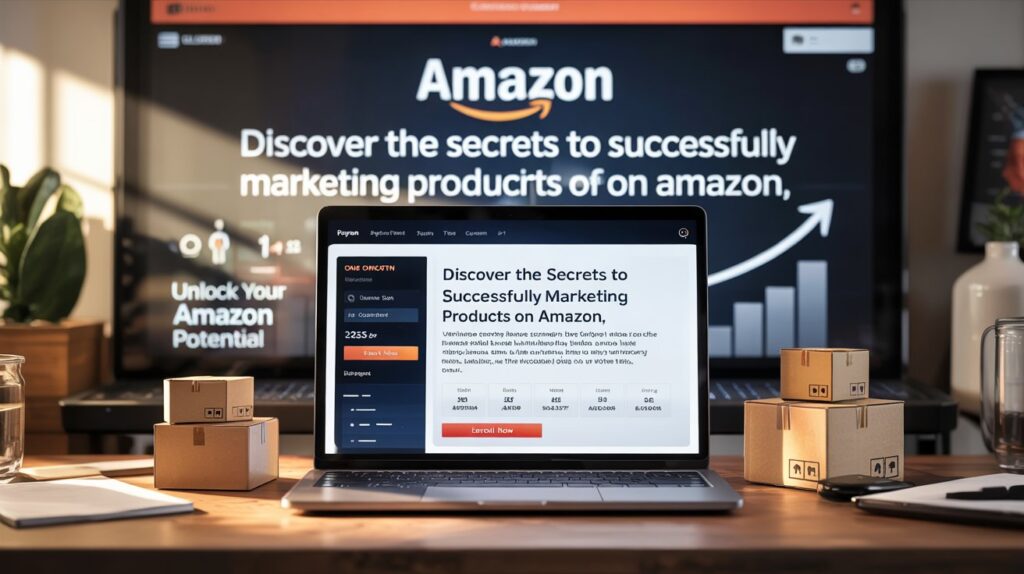
Pricing is another key component. Examine your competitors to strike a balance between profitable returns and market competitiveness. Providing start-up discounts or promotional codes will help boost initial purchases and customer feedback. Great photos and strong branding enable you to set higher prices through their impact on perceived value.
Product listings should include:
- Main product benefits
- Unique features and differentiators
- Use cases or ideal customers
- Materials, dimensions, and care instructions
- Warranty or satisfaction guarantees
Amazon PPC (Pay-Per-Click) advertising directs traffic to your product listings. Regular campaign supervision enables you to optimize performance through bid adjustments and keyword and budget modifications. Begin with auto campaigns and make the shift to manual targeting after gathering sufficient data.
Can sellers successfully use Alibaba products in Amazon dropshipping?
Most sellers should avoid dropshipping products from Alibaba directly to Amazon, despite the technical feasibility of this practice. Amazon maintains strict standards regarding seller performance as well as shipping times, and product quality. The design of Alibaba suppliers to manage bulk shipments with extended lead times makes processing individual orders inefficient and risky.
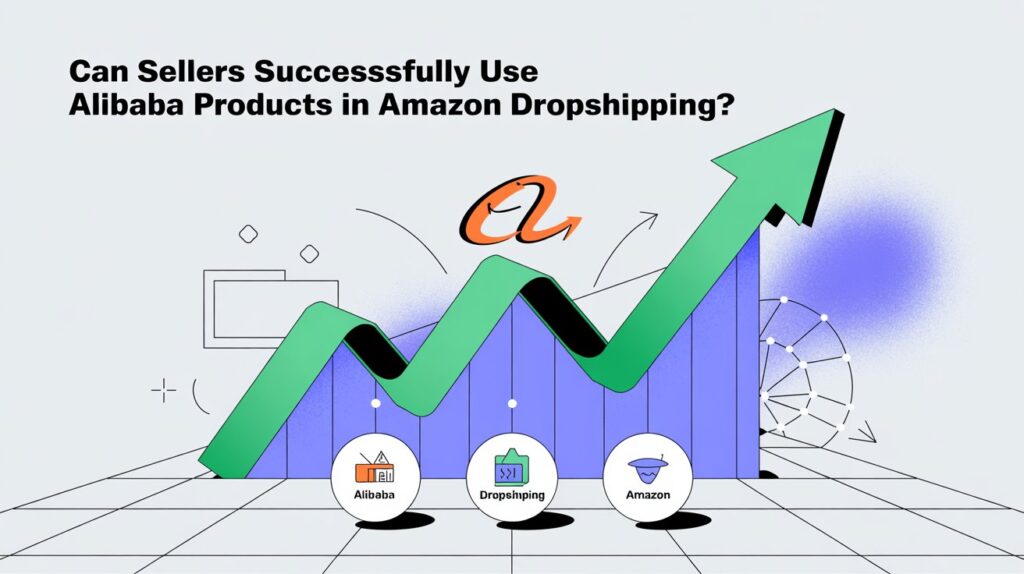
Marketplace Pulse discovered in 2023 that only 8% of sellers who tried direct dropshipping from Alibaba remained profitable after six months. The majority shifted to private label models with FBA to achieve improved control and scalability.
The following points explain why direct dropshipping from Alibaba to Amazon does not work effectively:
- Shipping times ranging from 15 to 45 days fail to meet Amazon’s delivery requirements.
- Sellers have no authority over product packaging or branding and cannot manage the customer experience.
- Inability to track shipments accurately
- High refund and chargeback rates
Although dropshipping can succeed on other marketplaces and through AliExpress suppliers, Amazon’s FBA program delivers greater reliability and profit potential.
How to prevent typical errors when purchasing from Alibaba and selling products on Amazon
Fresh sellers encounter preventable pitfalls that can disrupt their progress on Amazon. Two major mistakes are:
- Not properly vetting suppliers causes businesses to receive low-quality or non-compliant products.
- A lack of understanding of Amazon’s FBA requirements can produce delays in inventory fulfillment or result in shipment rejections.
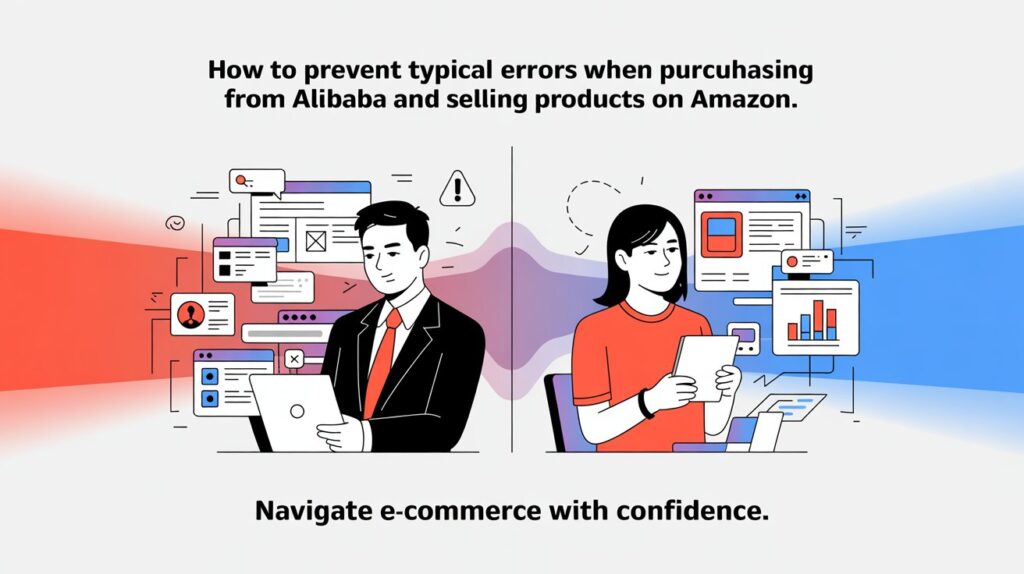
Other common errors include:
- Underestimating shipping and import duties
- Failing to address negative customer reviews and not making iterative changes damages seller performance.
- Using generic packaging that reduces perceived value
- Not trademarking your brand before competitors do
You can preserve your resources and well-being by preventing these errors from the start.
FAQs About Alibaba to Amazon FBA
Many sellers question if they need to obtain a business license before launching their enterprise. Individuals may set up Amazon seller accounts, but operating under a registered business enhances trustworthiness and simplifies tax processes.
Sea shipments benefit from the use of a freight forwarder, even though it remains an optional service. You minimize your potential risks since they take care of customs procedures, insurance requirements, and necessary documentation.
Alibaba operates legitimately, but many suppliers listed on the platform may not be trustworthy. Use Alibaba’s built-in protections and choose suppliers with verified profiles.
As for startup costs, they vary. A table appears below that shows average estimated expenses.
| Expense Category | Estimated Cost Range |
| Product Samples | $50 – $200 |
| First Inventory Order | $500 – $2,000 |
| Shipping & Customs | $300 – $1,000 |
| Amazon FBA Fees | $100 – $500 |
| Product Photography | $50 – $300 |
| PPC Advertising Budget | $100 – $500 |
| Total Estimated Startup | $1,100 – $4,500 |
Conclusion
A successful Amazon FBA business can be established through Alibaba products when you prepare properly and understand the necessary knowledge. Each stage, from niche identification through logistics management to product launch, contributes significantly to your business success.
Although the method presents itself as complex initially, thousands of sellers have established successful online businesses through this strategy. This complete guide will set you on a path to earn personal income through a worldwide supply chain system. Begin building your eCommerce empire right now by taking the first step.

